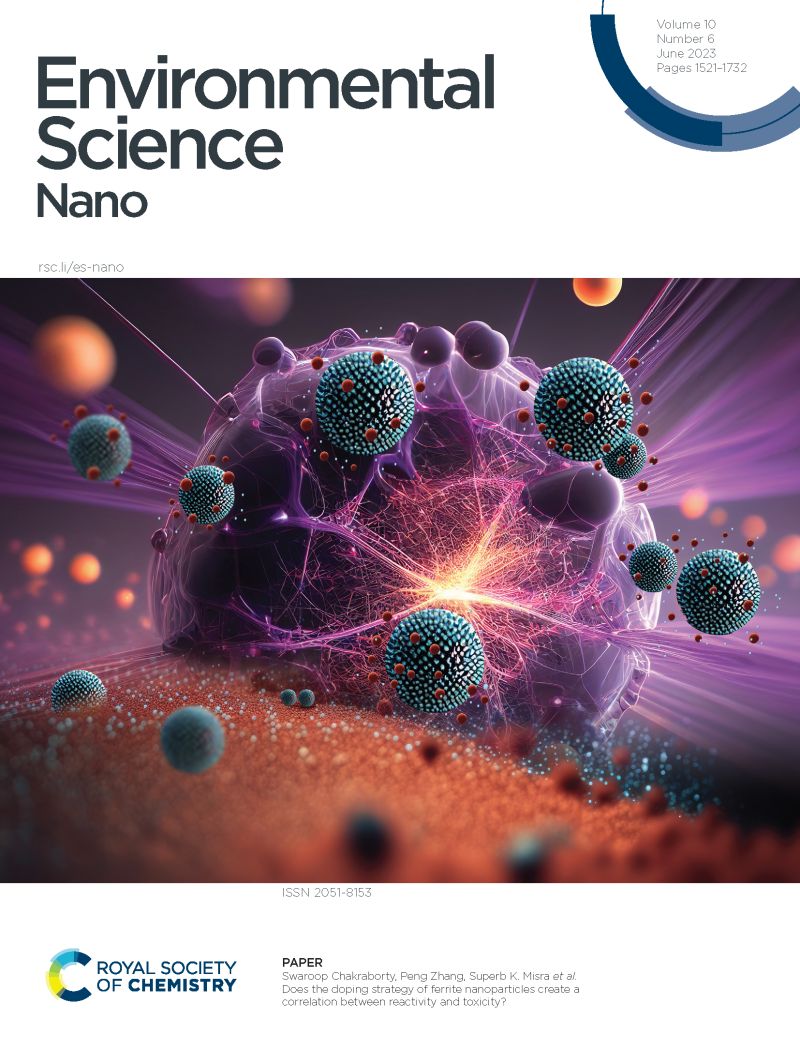转基因过程中肠道屏障功能的破坏对诱导草履虫产生纳米塑料毒性的影响
IF 5.8
2区 环境科学与生态学
Q1 CHEMISTRY, MULTIDISCIPLINARY
引用次数: 0
摘要
本文章由计算机程序翻译,如有差异,请以英文原文为准。
Effect of disruption in intestinal barrier function during transgenerational process on nanoplastic toxicity induction in Caenorhabditis elegans
After exposure at parental generation (P0-G), nanoplastics can induce transgenerational toxicity. Nevertheless, it remains unclear whether change in intestinal barrier function during transgenerational process affects the induction of nanoplastic toxicity. In the current study, polystyrene nanoparticle (PS-NP) was used as an example of nanoplastics. PS-NP (1 and 10 μg/L) caused transgenerational toxicity on locomotion behavior, brood size, and intestinal permeability. After exposure to PS-NP (1 and 10 μg/L) at P0-G, PS-NP accumulation was only observed at both P0-G and F1-G. RNA interference (RNAi) of acs-22 caused enhanced intestinal permeability, and PS-NP (10 μg/L) induced suppression in acs-22 expression from P0-G to F3-G. After RNAi of acs-22 at P0-G and F1-G, transgenerational toxicity of PS-NP (10 μg/L) was prolonged by more than two generations, and transgenerational PS-NP accumulation was prolonged till to F2-G. After RNAi of acs-22 at F2-G, transgenerational toxicity of PS-NP (10 μg/L) could be extended by more than two generations. Moreover, RNAi of acs-22 at F4-G caused extension of transgenerational PS-NP (10 μg/L) toxicity till to F5-G. Therefore, transgenerational toxicity of nanoplastics can be affected by disrupted intestinal barrier function induced by acs-22 RNAi during transgenerational process in organisms.
求助全文
通过发布文献求助,成功后即可免费获取论文全文。
去求助
来源期刊

Environmental Science: Nano
CHEMISTRY, MULTIDISCIPLINARY-ENVIRONMENTAL SCIENCES
CiteScore
12.20
自引率
5.50%
发文量
290
审稿时长
2.1 months
期刊介绍:
Environmental Science: Nano serves as a comprehensive and high-impact peer-reviewed source of information on the design and demonstration of engineered nanomaterials for environment-based applications. It also covers the interactions between engineered, natural, and incidental nanomaterials with biological and environmental systems. This scope includes, but is not limited to, the following topic areas:
Novel nanomaterial-based applications for water, air, soil, food, and energy sustainability
Nanomaterial interactions with biological systems and nanotoxicology
Environmental fate, reactivity, and transformations of nanoscale materials
Nanoscale processes in the environment
Sustainable nanotechnology including rational nanomaterial design, life cycle assessment, risk/benefit analysis
 求助内容:
求助内容: 应助结果提醒方式:
应助结果提醒方式:


